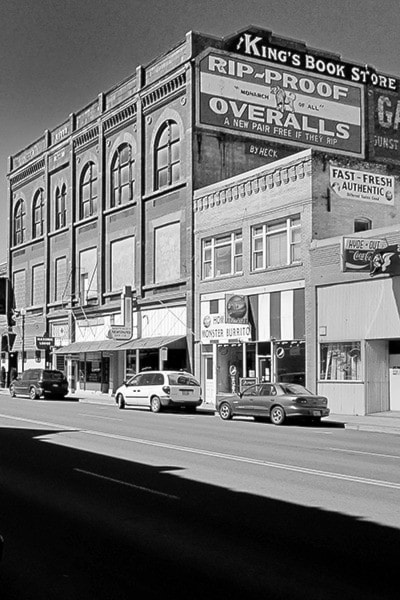Black and white photography has always been my favourite photographic medium. I recall when I first began pointing my camera at different subjects, and started making photographic prints, that I didn’t think too much of colour photography.
Yes, colour was fine for documentary work as found in “National Geographic” magazine, or making snapshots of some family, but in the 1970’s creative photographers seemed to be working in black and white, not colour.
Photojournalist Ted Grant, who is regarded as Canada’s premier living photographer wrote, “When you photograph people in color, you photograph their clothes. But when you photograph people in black and white, you photograph their souls!”
Black and white photographs always (and still do in my opinion) seem to create moods and convey an almost tactile quality.
During the period of film photography, photographers had to decide whether their subject would look best in black and white print film, colour print film or slide film, and most photographers trudged around with at least two camera bodies weighing them down.
However, today that decision to make a black and white image is best left to the computer and some exciting post-production software. And there is no need to pack around another camera. (Well, unless one is worried about camera failure.)
Thankfully post-production is no longer contained to dedicated, darkened rooms. I still have an 11’x11’ foot room in our basement, complete with a six-foot stainless steel sink and custom cabinets. However, it’s mostly used to store photo equipment and for washing my chickens’ eggs.
Now my lab is on the main floor of our home, and instead of chemicals, the image and print production has become an intricate combination of computer programs, quality printers, and papers that easily rival the quality of chemical-based, traditional, black and white photography.
A black and white photograph depends on its ability to communicate, it doesn’t need to rely on eye-catching colours for its visual presentation.
Those B&W images that stand and pass the test of time, combine attention to subtle changes in light, composition, and perspective. It stretches our creativity, and forces us to visualize our world in different terms. I remember a photographer once saying that he believed shooting in B&W refined one’s way of seeing. And I heartily agree.
In spite of the many modern photographers that don’t bother with anything more than just accepting what comes out of their camera, black and white photography is far from being left behind in the past. In my opinion, with the current processing software, updates in high quality printers, and the latest in printing papers, black and white image-making will continue to be an option for a host of serious creative photographers.
Those photographers that are good at black and white photography learn to exploit the differences in tonal elements in a scene, and present viewers with successful B&W portrayals that make excellent use of shapes, textures, light and shadow. The loss of those original colours becomes irrelevant.
For those that haven’t tried monochromatic (another word applied to B&W) image making, I will mention that it is easier than ever. Most digital cameras have a black and white mode available in the menu. I don’t really like using that, as it does nothing more than de-saturate an images colour data file, excluding control of the different tonal values that make up a black and white image.
I suggest trying one of the many great programs available on the internet that can be downloaded to test for free. Who knows, you might, like I do, really like black and white photography.
Readers by now must know how much I like quotes from famous photographers. So I’ll finish this up with some words from a turn of the century fashion and commercial photographer, Paul Outerbridge: “One very important difference between color and monochromatic photography is this: in black and white you suggest; in color you state. Much can be implied by suggestion, but statement demands certainty… absolute certainty.”
These are my thoughts this week. Contact me at www.enmanscamera.com or emcam@telus.net. Stop by Enman’s Camera at 423 Tranquille Road in Kamloops. And if you want an experienced photographer please call me at 250-371-3069. I also sell an interesting selection of used photographic equipment.
